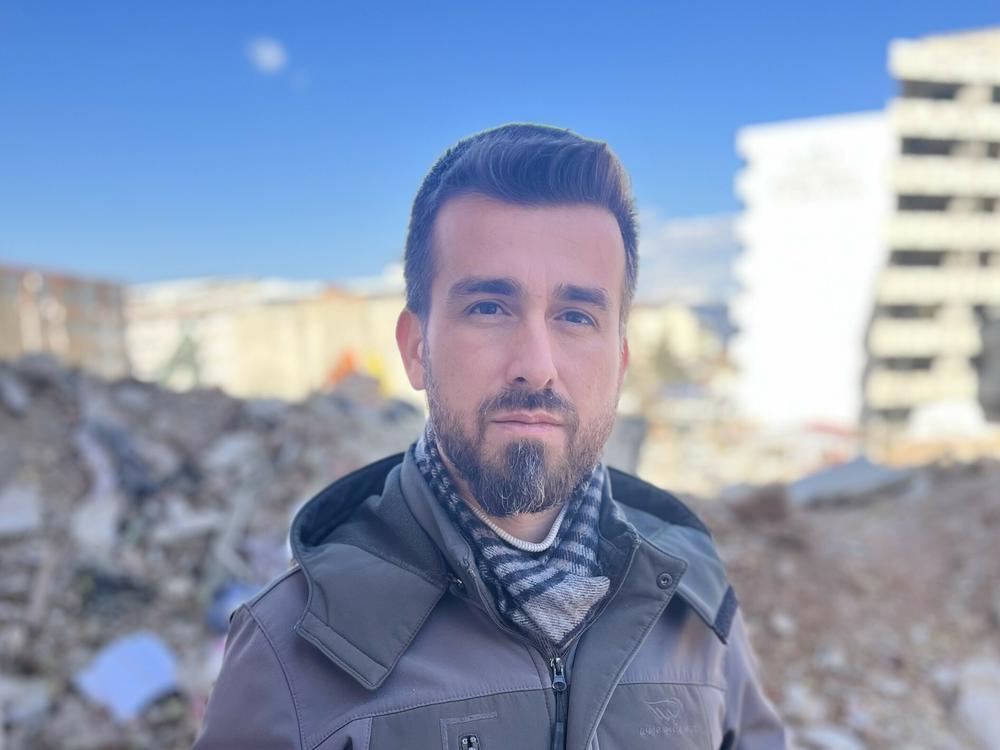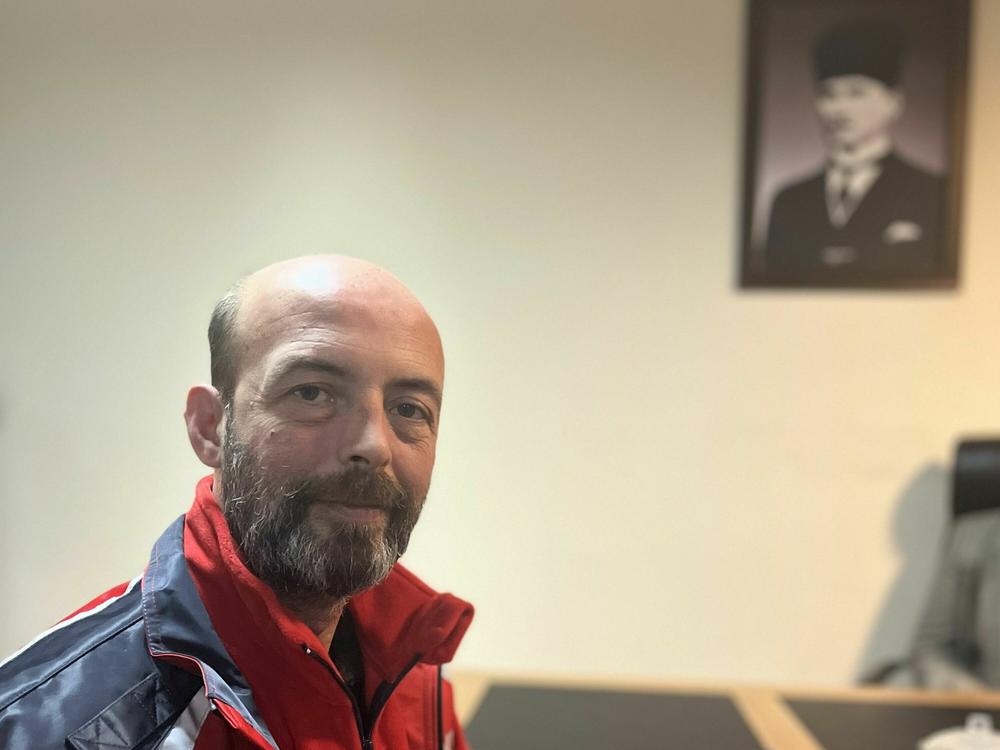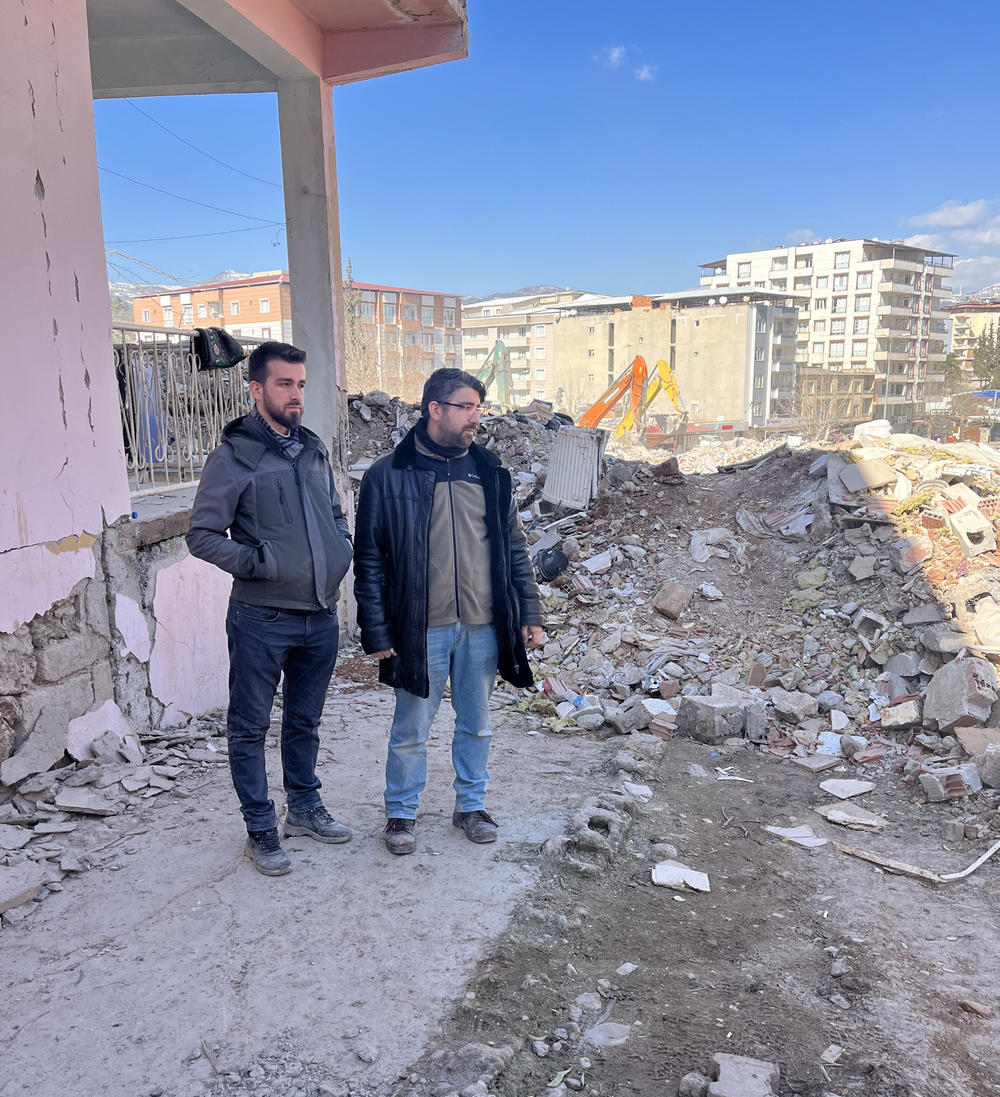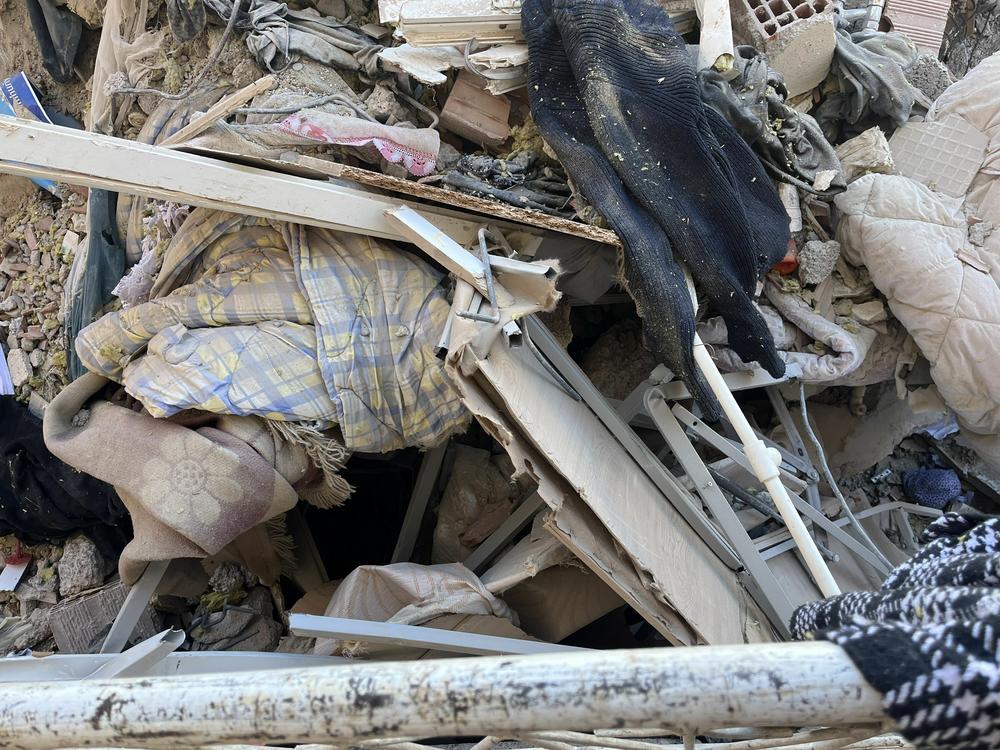Section Branding
Header Content
One couple's bedroom caved in during the earthquake. Here's how it saved their lives
Primary Content
ISLAHIYE, Turkey — Ali and Merve Kafadenk were sleeping in bed when their six-story apartment building started to shake.
It was a little after 4 a.m. on Feb. 6. Merve poked Ali and woke him up. There's an earthquake, she said. It'll pass, he replied.
Then, two opposite bedroom walls caved in, forming a concrete tent over their bed. It was so low they couldn't sit up.
"We were stuck under the walls ... with a shape of an upside-down V. That's what protected us," Ali Kafadenk says.
The catastrophic earthquake has killed more than 43,000 people in Turkey and Syria, The Associated Press reported late Friday. The Kafadenks' town of Islahiye was hard-hit. Out of the dozens who lived in his 18-unit apartment building, only two others escaped alive, he says.
Here's what their building looked like before the quake:
How some stayed alive under the rubble
A tipped wall creating a small cavity is one way several lucky people managed to stay alive under the rubble after last week's massive earthquake and aftershocks.
Some found themselves, by chance, trapped underneath a wall that fell over onto a bed or another object, creating a small triangle that protected them.
"They have a space to live," says Osman Turk, a response specialist on Turkey's National Medical Rescue Team coordinating triage units that help survivors pulled out of the rubble.
In one case, he says, a wall fell onto a refrigerator, giving a 7-year-old girl a protective space — and food — to survive for four days before she was rescued.
For those who survived for days under the rubble, the cold weather also helped, medics say, because survivors didn't sweat much, delaying dehydration.
They thought they would die
Ali Kafadenk, 34, and his wife Merve, 27, were only trapped under the rubble for about an hour and a half, but thought they were going to die.
"That was the only option, we thought," Ali Kafadenk says. "Like, any minute, there's going to be something that's going to come crashing down on our heads and this is going to be the end."
He covered his wife with the bedcovers, and threw himself over her to protect her. They cried together, and prayed together. "We were saying to each other that we came from God. We will go back to God," he says.
A supernatural sound
He heard his building sink and the earth move. It was a sound he had never heard before in his life: strong and loud, like low thunder.
"It feels like it's a supernatural sound," he says. "Like the sound that we hear in sci-fi movies."
The building shifted and crumbled. The three floors above their apartment fell into the street.
Then somehow an opening formed in the wall. It was too dusty to see anything, but he felt it: snowy, cold air. That is when he heard his neighbors' screams: My baby's stuck here. My leg is stuck there. My mom's under here. My dad's over there.
So Ali and Merve Kafadenk also shouted, and someone came to pull them out. Ali was barefoot, and another man gave him a pair of shoes.
"He said, 'I have seven children who are stuck under the rubble over there. I just heard you, so I tried to help you. So I came for you. But now I need to go and deal with my children,'" Ali recalls.
His home in Islahiye was about half a mile from the estimated fault line, as mapped by the U.S. Geological Survey.
Visiting the rubble for the first time
Nine days after the quake, Kafadenk is back in the disaster zone with his brother to retrieve the registration papers from his buried car for an insurance claim. It's the first time he's returned to the ruins of his home.
"Seeing it, it feels like I'm living through all of it again. I'm feeling fear, sadness and loss," he says.
Merve teaches kindergarten, and he teaches first through fourth grade. They've tried calling their colleagues but can't reach them. He thinks they've died.
One of the few things he could recover from the building were letters of appreciation from his students. He wonders how many of them survived.
Good news comes a few days later: After years of trying, he finally got accepted to teach in a school that pays about triple the salary he used to make.
"I cannot call this more than a miracle," says his brother, Abdullah Kafadenk.
Copyright 2023 NPR. To see more, visit https://www.npr.org.




